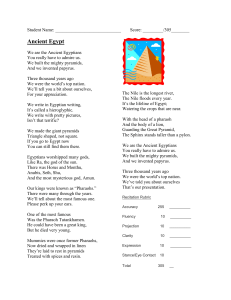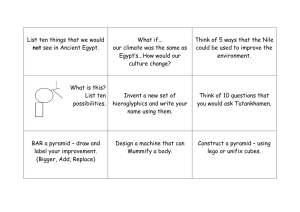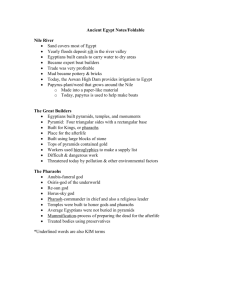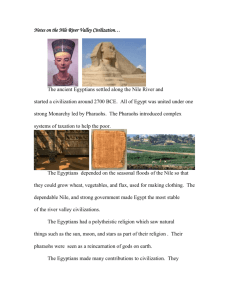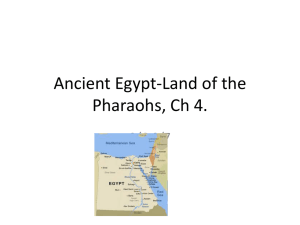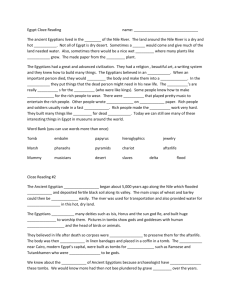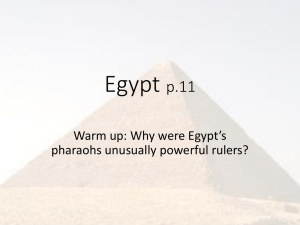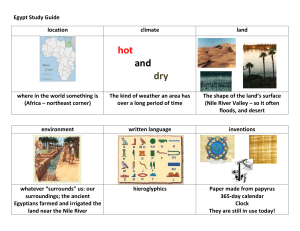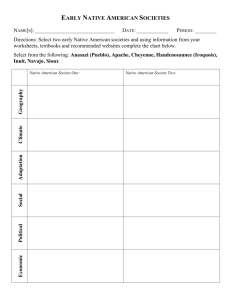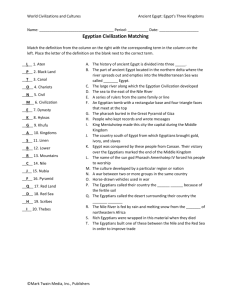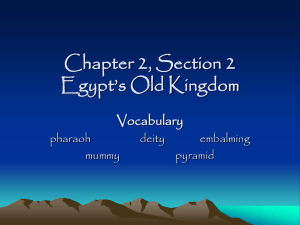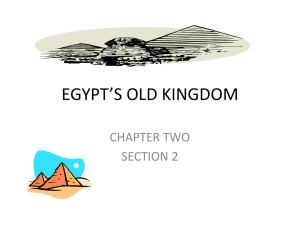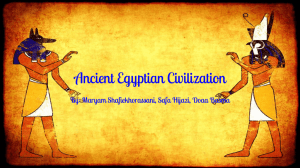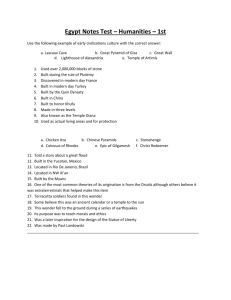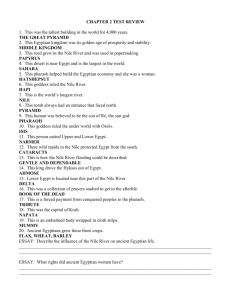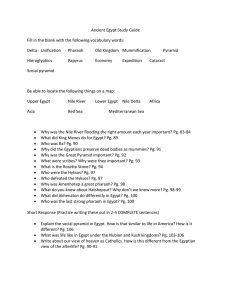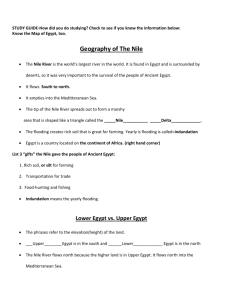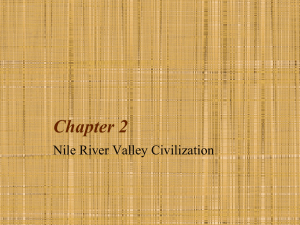Ancient Egyptian Study Guide
advertisement
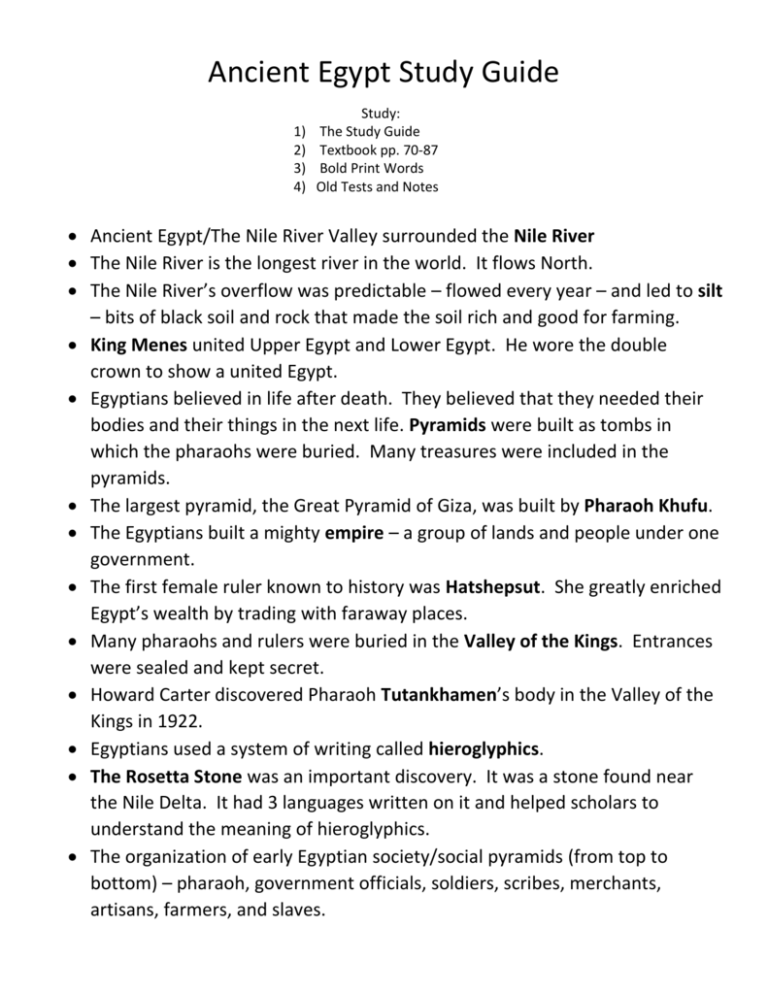
Ancient Egypt Study Guide 1) 2) 3) 4) Study: The Study Guide Textbook pp. 70-87 Bold Print Words Old Tests and Notes Ancient Egypt/The Nile River Valley surrounded the Nile River The Nile River is the longest river in the world. It flows North. The Nile River’s overflow was predictable – flowed every year – and led to silt – bits of black soil and rock that made the soil rich and good for farming. King Menes united Upper Egypt and Lower Egypt. He wore the double crown to show a united Egypt. Egyptians believed in life after death. They believed that they needed their bodies and their things in the next life. Pyramids were built as tombs in which the pharaohs were buried. Many treasures were included in the pyramids. The largest pyramid, the Great Pyramid of Giza, was built by Pharaoh Khufu. The Egyptians built a mighty empire – a group of lands and people under one government. The first female ruler known to history was Hatshepsut. She greatly enriched Egypt’s wealth by trading with faraway places. Many pharaohs and rulers were buried in the Valley of the Kings. Entrances were sealed and kept secret. Howard Carter discovered Pharaoh Tutankhamen’s body in the Valley of the Kings in 1922. Egyptians used a system of writing called hieroglyphics. The Rosetta Stone was an important discovery. It was a stone found near the Nile Delta. It had 3 languages written on it and helped scholars to understand the meaning of hieroglyphics. The organization of early Egyptian society/social pyramids (from top to bottom) – pharaoh, government officials, soldiers, scribes, merchants, artisans, farmers, and slaves.
